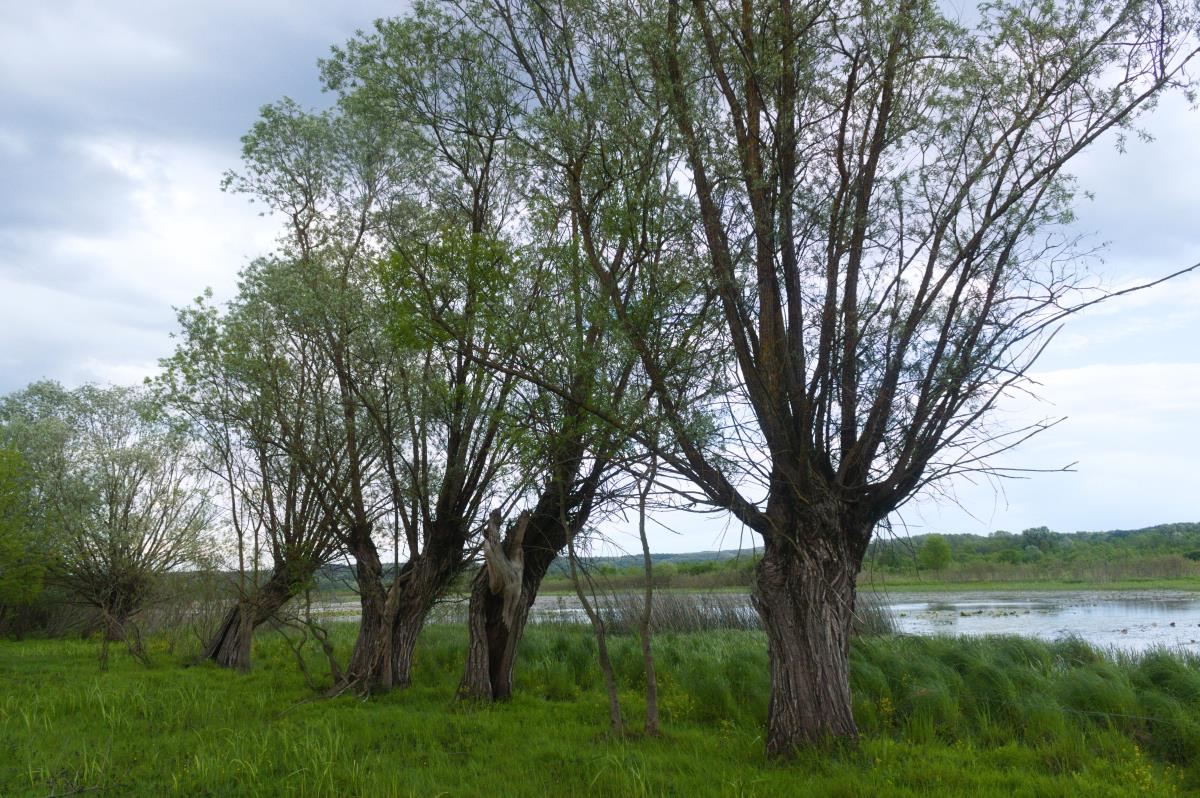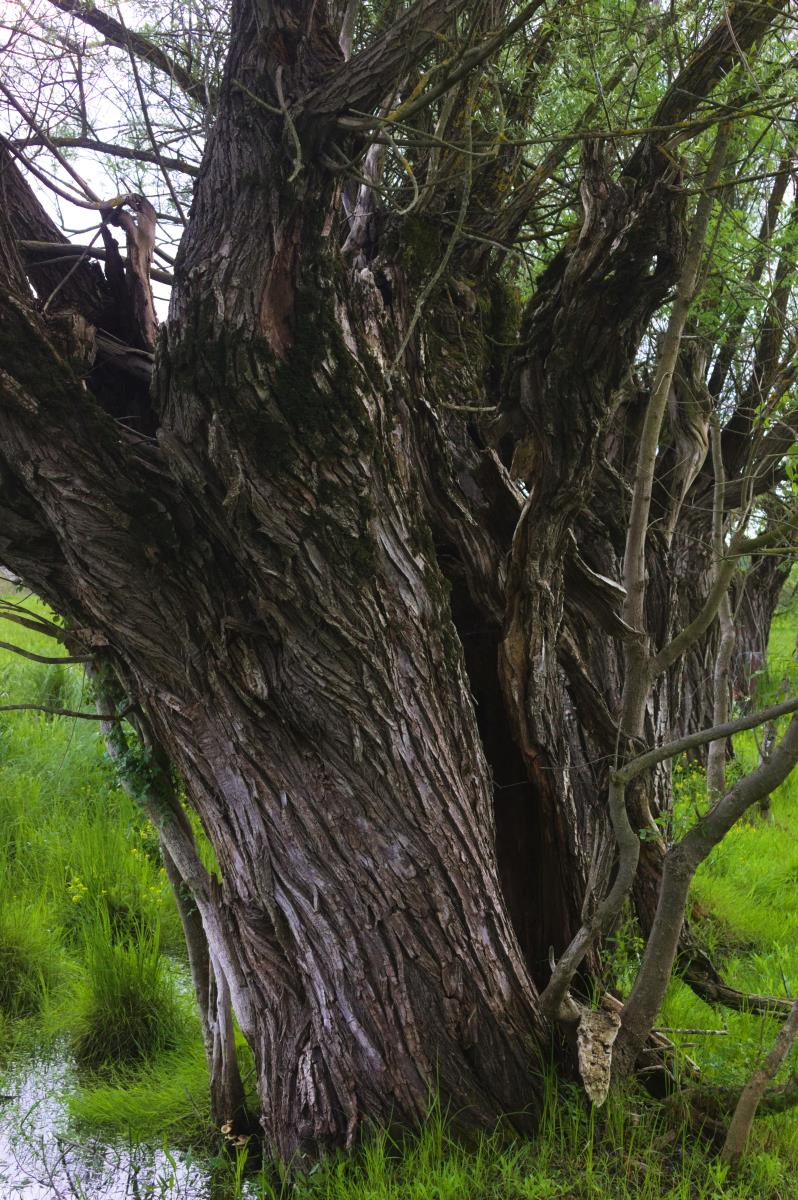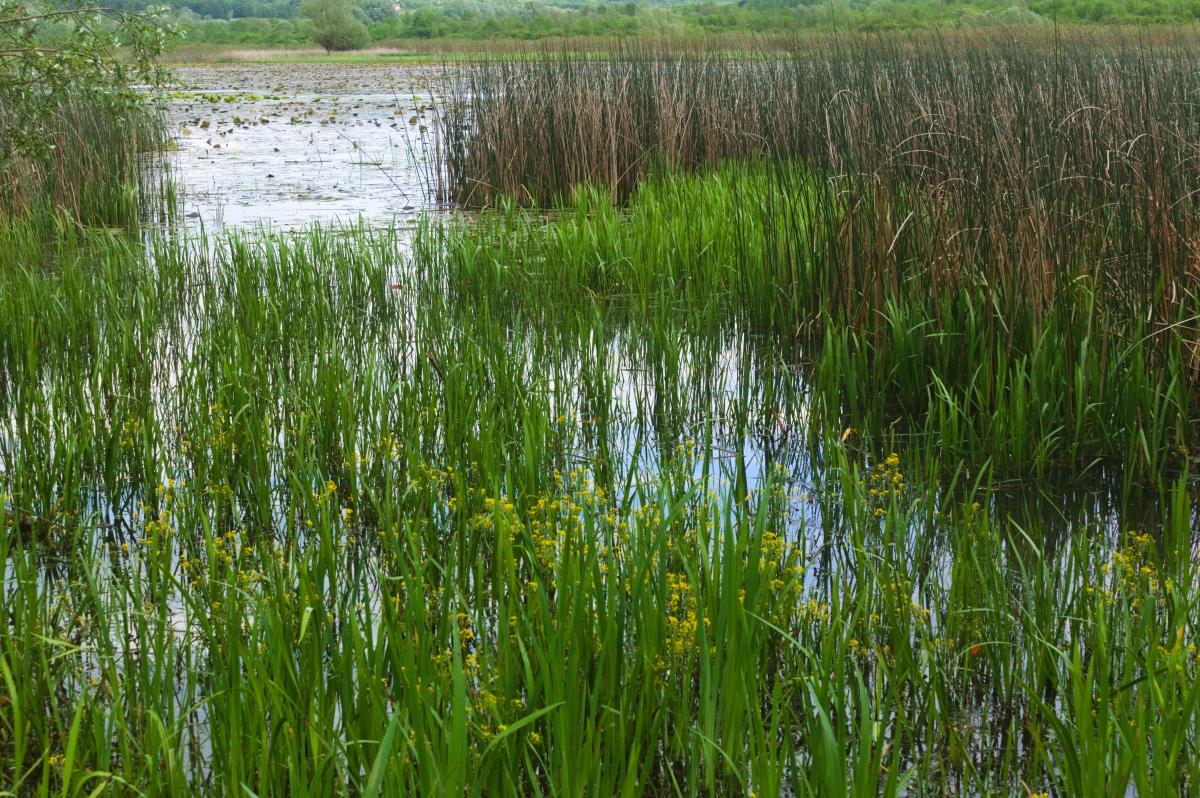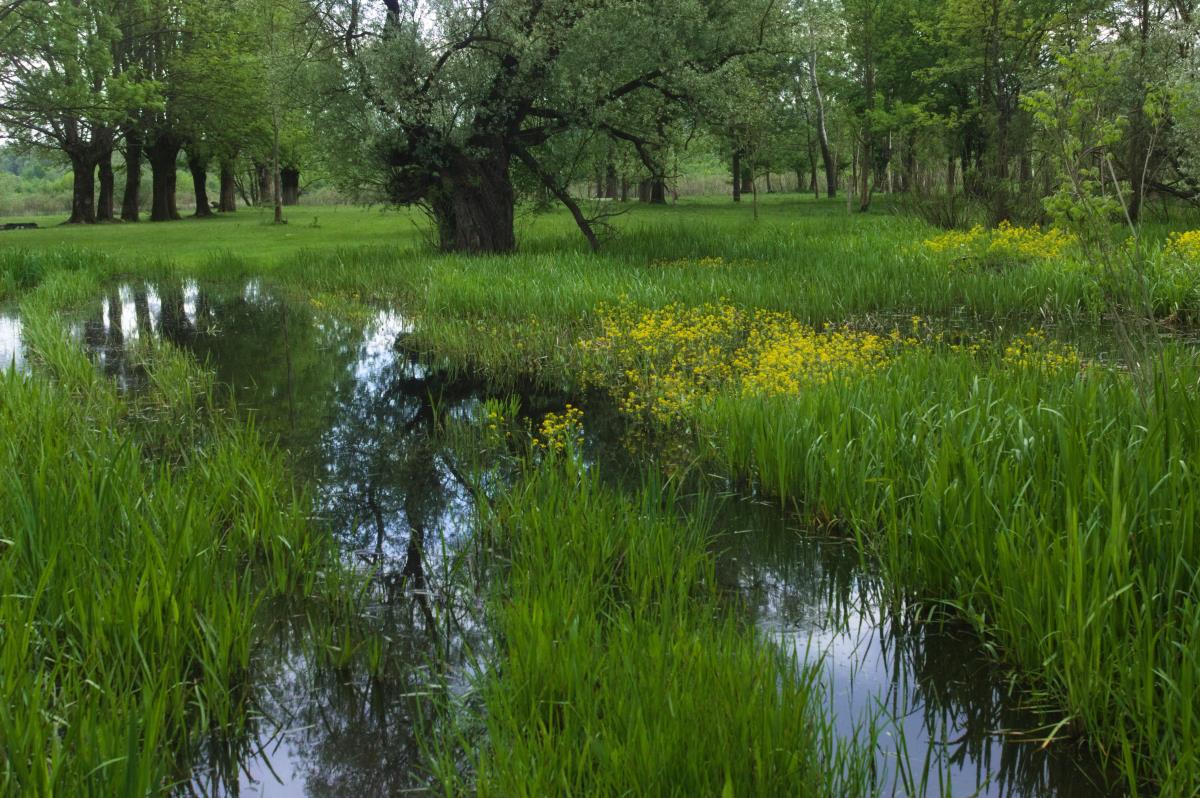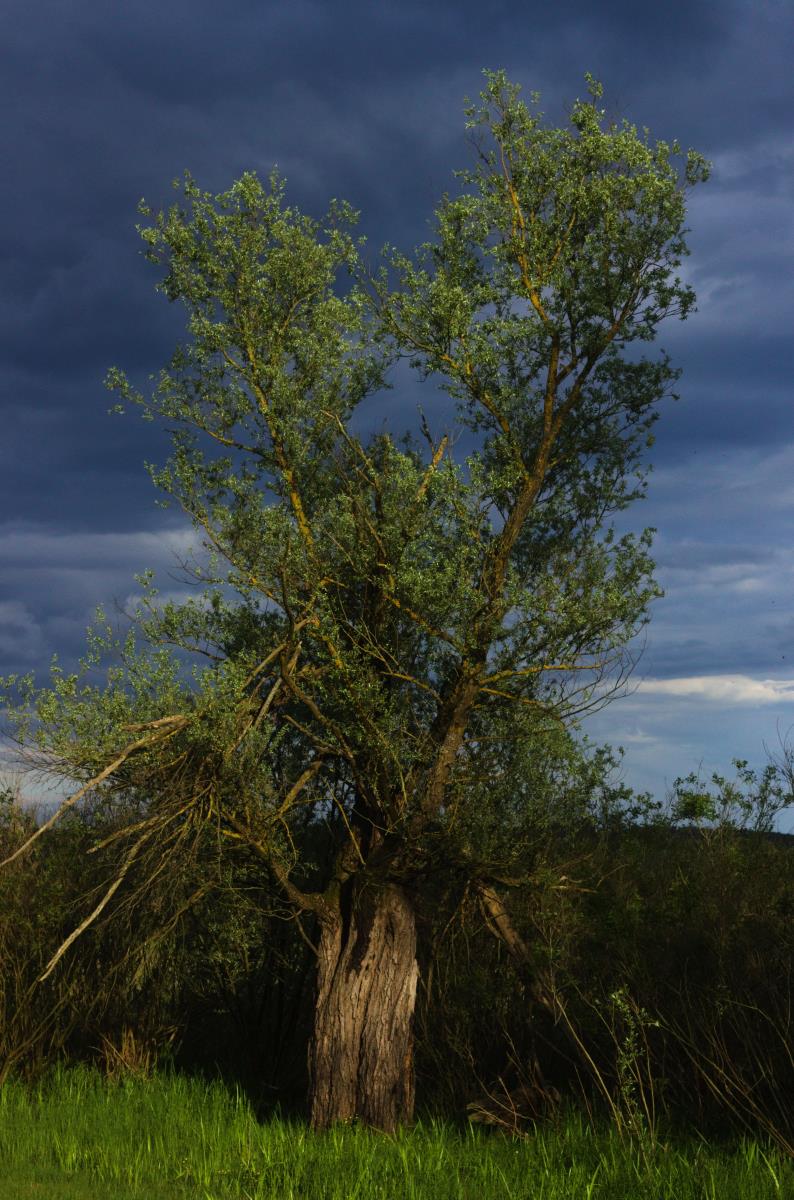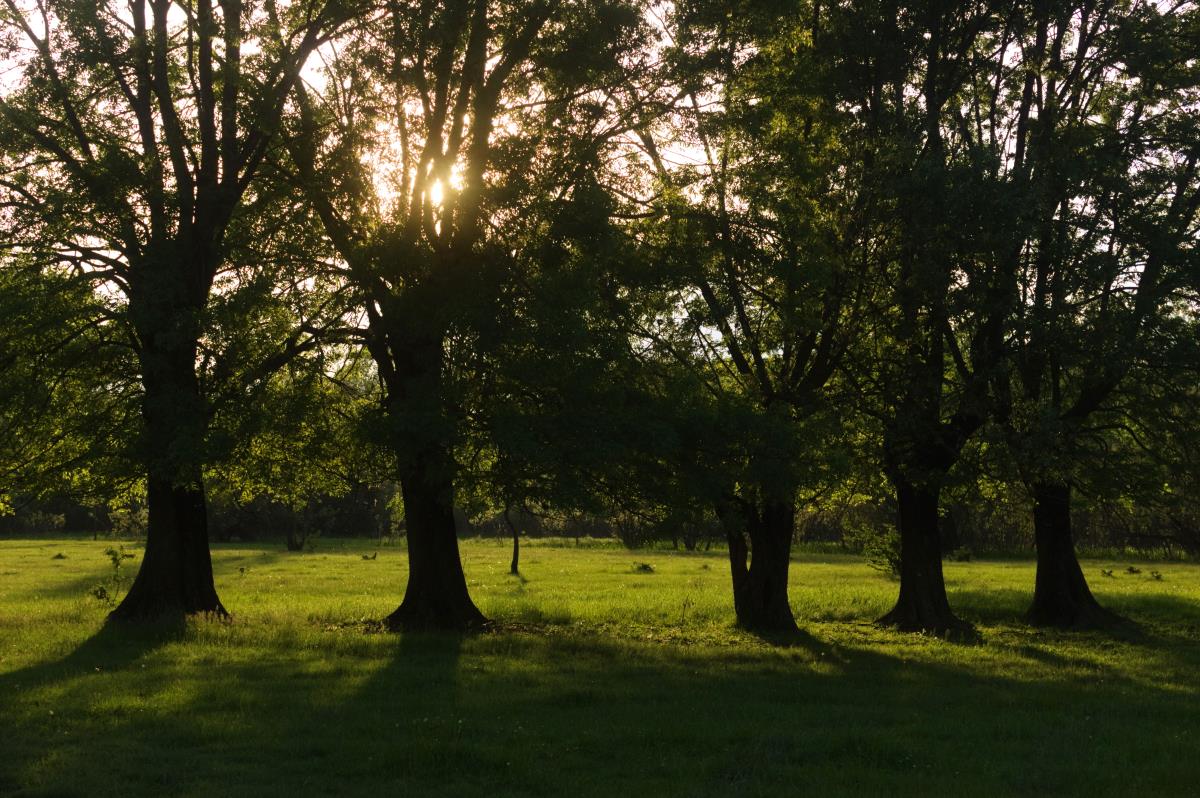BARA DVORINA SPECIAL ORNITHOLOGICAL RESERVE
Category of protection: Special ornithological reserve
Year of protection: 1987
Location
Special ornithological reserve Bara Dvorina is located in the retention of the Sava River, near the village of Donja Bebrina, 18 km east of Slavonski Brod.
History
The villagers of Donja Bebrina have been using pastures, meadows and forests and have traditionally been engaged in fishing in this area. The area was protected as a special ornithological reserve in 1987.
Tourism
Dvorina is mostly visited by primary and secondary school students on field trips. The local hospitality industry is based on family farms, which offer food, accommodation and recreational opportunities such as riding.
Natural values
Bara Dvorina stretches along the left bank of the Sava River between the embankment near Donja Bebrina and the river itself. This pond with the surrounding floodplain is the last major wetland area in the vicinity of Slavonski Brod. Since there is no embankment along the Sava River here, the entire area of over 600 ha is often flooded all the way to the embankment south of Donja Bebrina. When the water recedes, the wet grasslands around the pond are used by the locals of Donja Bebrina and Klakara as pastures. In the spring, this area has a very rare and beautiful scenery. The water surface, covered with European white and yellow water lilies, surrounded by a dark green belt of sedges and yellow iris, is embraced by pastures filled with horses, cows, pigs and geese. Bara Dvorina is also very interesting from a scientific, especially ornithological and botanical, point of view. Several plant communities have been developed here that would need to be scientifically examined. In the water we find a community of water lilies (Nymphaeto - Nupharetum), while the edge of the pond is overgrown with several species of sedges (Carex sp.), floating sweet-grass (Glyceria fluitans), sweet flag (Acorus calamus), yellow iris (Iris pseudacorus), and many others. Near the pond, we can find a very picturesque old hollow bumpy tree of white willow (Salix alba). Significant habitats of this area are: mesophilic meadows of Central Europe, floodplain forests of pedunculate oak, free-floaters and submerged hydrophytes, amphibious communities and floodplain forests of black alder and field ash. Dvorina is of great value to birds, especially during the spring and autumn migration, when there is a qualitatively and quantitatively very rich ornithofauna. According to ornithologist Mirko Šetina, who has been studying the birds of Dvorina and the surrounding area for years, over 160 bird species have been recorded here. The following birds nest on the pond: great crested grebe (Podiceps cristatus), little grebe (Tachibaptus ruficollis), mallard (Anas platyrhynchos), ferruginous duck (Aythya nyroca), Eurasian coot (Fulica atra), comon moorhen (Galinula chloropus), whiskered tern (Chlidonias hybrida), common tern (Sterna hirundo), water rail (Rallus aquaticus), crake and rail birds (Porzana spp.), and great reed warbler (Acrocephalus arundinaceus). The surrounding wet grasslands are the nesting grounds of the northern lapwing (Vanellus vanellus), common pheasant (Phasianus colchicus), red-capped lark (Calandrella cinerea) and crested lark (Galerida cristata). In previous years, the corncrake (Crex crex) also nested there, but it has not been noticed lately. White storks (Ciconia ciconia) feed on the grasslands and nest in the surrounding villages. In spring, from the bushes along the embankment one can hear the singing of The Eurasian blackcap (Sylvia atricapilla), common whitethroat (Sylvia communis), marsh warbler (Acrocephalus palustris), European robin (Erithacus rubecula), common nightingale (Luscinia megarhynchos), and ed-backed shrike (Lanius collurio). The surrounding pedunculate oak forests, dotted with smaller ponds with wetland vegetation, are rich in nesting sites of: pigeons, owls, woodpeckers, various songbirds, black kites (Milvus migrans), mallards (Anas platyrhynchos), common little bitterns (Ixobrychus minutus) and others. Dvorina is the richest in bird species during spring and autumn migrations, and partly in winter. Then the water surface increases and, as long as it does not get trapped by ice, large concentrations of wetland birds from all over Europe linger here. Various ducks, grebes, herons, storks, predators, gulls, terns, swallows and other songbirds and shorebirds rest and feed in Dvorina during their long journey.
Sights
The biggest Dvorina attraction is the largest pond located in the heart of the reserve. Although only about 1000 metres long, it is an important feeding, nesting and resting place for birds. It is one of the few natural nesting sites of the whiskered tern (Chlidonias hybrida). Large choirs of European fire-bellied toad (Bombina bombina) echo loudly through the Reserve in the spring. The Danube crested newt (Triturus dobrogicus) was recorded for the first time in the reserve in 2009 and the greater horseshoe bat (Rhinolophus ferrumequinum) in 2016. The greater horseshoe bat is a Natura species recorded in the Croatian Red Book of mamals (Antolović et. al, 2006). The research was conducted as part of the Sava Bats project. The project and research were funded by the EuroNatur Foundation, the Aage V. Jensen Charity Foundation and the Michael Otto Stiftung, and implemented by the Natura Slavonica Public Institution.
Dvorina is also part of the European ecological network Natura 2000 as a conservation area important for birds Jelas polje (HR1000005) and a conservation area important for species and habitat types Dvorina (HR2000426). Target species of Dvorina reserve include the European fire-bellied toad (Bombina bombina), the Danube crested newt (Triturus dobrogicus), the garden speedwell (Pseudolysimachion longifolium), the greater spearwort (Ranunculus lingua), and habitats 6510: Extensively managed hay meadows of the planar to submontane zones (Alopecurus pratensis, Sanguisorba officinalis); 3150: Natural eutrophic lakes with Hydrocharition or Magnopotamion type vegetation and 3130: Oligotrophic to mesotrophic standing waters hosting amphibious shoreweed communities (Littorelletea) and -annual dwarf rush communities (Isoëto-Nanojuncetea).
Dvorina is also part of the European ecological network Natura 2000 as a conservation area important for birds Jelas polje (HR1000005) and a conservation area important for species and habitat types Dvorina (HR2000426). Target species of Dvorina reserve include the European fire-bellied toad (Bombina bombina), the Danube crested newt (Triturus dobrogicus), the garden speedwell (Pseudolysimachion longifolium), the greater spearwort (Ranunculus lingua), and habitats 6510: Extensively managed hay meadows of the planar to submontane zones (Alopecurus pratensis, Sanguisorba officinalis); 3150: Natural eutrophic lakes with Hydrocharition or Magnopotamion type vegetation and 3130: Oligotrophic to mesotrophic standing waters hosting amphibious shoreweed communities (Littorelletea) and -annual dwarf rush communities (Isoëto-Nanojuncetea).
Known about the unknown
The locals of Klakar, a municipality covered in part by the reserve, are famous for cattle breeding and their dairy products which are sold at the farmers' market in Slavonski Brod. Cows are still traditionally grazed on the floodplain pastures of Dvorina.
The area is open for visitors:
- Working hours (for visitors):
- Prior notice: The area is open for group visits which should be announced at phone numbers 00385 35 409 043 or 00385 35 409 042 or email zastita.prirode@bpz.hr or using the link: http://www.natura-slavonica.hr/hr/zasticena-podrucja1/ announcement-group-posjeta.html
The area is managed by Public institution for management of protected parts of nature of Brod-Posavina County
- Address: Petra Krešimira IV. br. 1, 35000 Slavonski Brod, Croatia
- Telephone number: +385 35 409 043 ili +385 35 409 042
- Official website: www.natura-slavonica.hr
